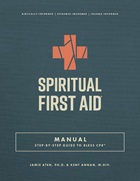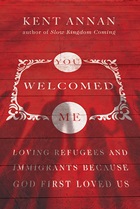Want Better Relationships with Young Donors? Change Your Priorities.

Things change as we age. Not just physically, but in many ways: our families, our finances, our worldview, our priorities.
Two things that have consistently changed as people age are church attendance and giving. Young adults leave home and often church attendance goes out the window. As they age, settle down, and start having children, it often returns.
Giving, too, has historically been different by age group. Older adults tend to have fewer financial commitments like college funds or kids’ braces. They’re more often in peak earning years or financially stable enough to retire. And they’re more likely to look beyond themselves at the world they’re leaving behind for their kids and grandkids.
That’s why the prime donors for so many churches and charities are in their fifties, sixties, seventies, or beyond. Historically, as young people age, they grow and mature into the next generation of peak donors.
But what if that change stops happening?
Grey Matter Research and Infinity Concepts joined forces for a series of studies among evangelicals. In two of our reports (The Generosity Factor and The Generation Gap), we found substantial differences between donors under age 40 and older donors – and the older they are, the bigger the differences.
For one thing, while the different age groups are about equally likely to give to church, their generosity varies a lot. The average evangelical 70 or older gives 4.2% of household income to their church. This drops as age falls, reaching a low of 1.6% among those under 40. And while 69% of evangelicals 70 and older give to charity or ministry outside of a church, only 47% of those under 40 do so.
Their giving preferences also differ. In giving outside of church, older donors strongly prefer donating domestically (if not locally). They prefer supporting a small number of causes and organizations they already know well. They tend to approach unfamiliar organizations with trust, but they still tend to research them and plan out their giving in advance.
Young donors are exactly the opposite. They crave variety – wanting to know about new organizations and preferring to spread their money around among more causes and organizations. They are the only age group to prefer not to give locally and actually prefer overseas to domestic. They’re far less likely than the oldest donors to do research or plan their giving in advance. Instead, they more often give spur of the moment or when it “feels right.” Which is ironic, since they are also much less likely than older donors to approach new organizations with an assumption of trustworthiness.
But won’t all this change as they age? Won’t the cycle just continue: younger donors mature, give more, start making more careful decisions, focus more at home, etc.?
Not necessarily.
We can’t predict the future, but we can look at some of the environmental stimuli that may be impacting the attitudes of younger evangelicals. These include:
Globalization: Younger adults are maturing in a time when the biggest Netflix show is from South Korea, their coworker may be from India, and they can connect through social media with someone from Portugal or Paraguay. They are much more globally focused in many things, not just their giving.
Uncertainty: Our grandparents might have worked for the same company for 40 years. Our parents might have switched jobs every decade. Today’s younger adults know The Great Resignation and the gig economy, switching jobs or even careers at the drop of a hat. This means more economic uncertainty. People don’t tend to give out of uncertainty.
The Rise of the Nones: Thirty years ago, few people were willing to identify as not having any particular religious beliefs. Today, Nones represent about three out of every ten Americans. Faith is simply becoming less of a factor in American life, especially among younger people. And we know from substantial research that faith is often a driving factor in giving.
Options: Not long ago, “giving” generally meant donating to a non-profit organization. Today, crowdfunding and direct giving are increasingly pulling money away from registered charities. In a study Grey Matter did with Newport One, we found Gen Z and Millennials were considerably less likely than other generations to give to congregations or charitable organizations, and more likely to give directly to friends or family, to strangers, or through crowdfunding. If younger people increase their generosity as they age, that money won’t necessarily be given through traditional channels of church and charity.
Long term, things may be very different for churches and ministries as today’s younger adults mature into tomorrow’s core donors – or at least into what once was the key core donor demographic.
Ron Sellers is the grey matter behind Grey Matter Research. He has served over 100 donor-supported organizations in his career, along with many for-profit companies, through consumer insights and market research.
The Better Samaritan is a part of CT's
Blog Forum. Support the work of CT.
Subscribe and get one year free.
The views of the blogger do not necessarily reflect those of Christianity Today.





















